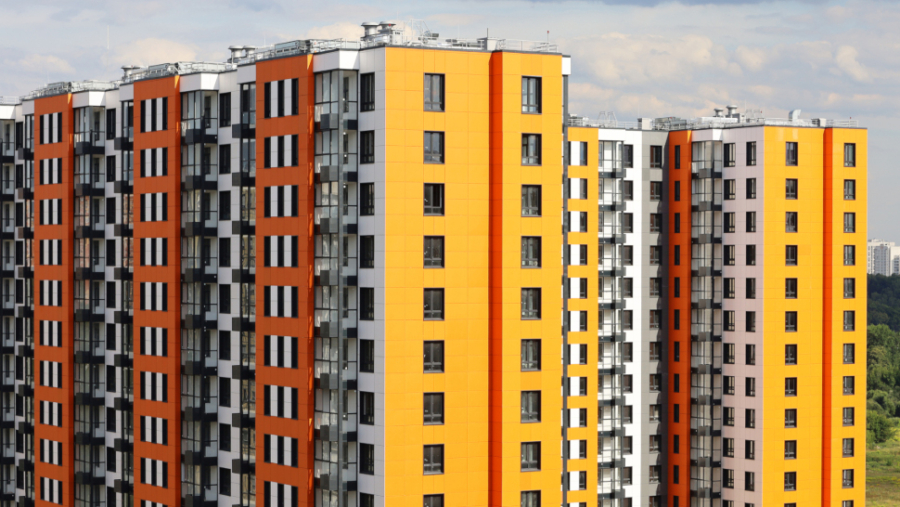

This short article provides a detailed breakdown of what the External Wall System (EWS) is, and how its certification using Form EWS1 is relevant to those in the construction industry and those with an interest in property, including lenders and buyers. Residential building owners should be aware that both valuers and lenders may request this. Purchasers and tenants may also seek these forms to gain an idea of the scale and cost of potential remediation works.
What is Form EWS1 and why is it relevant?
Form EWS1 is relevant to the EWS of residential properties and applies to an entire building or block and so may be relevant to mixed-use. The EWS refers to the outside wall of residential buildings, and includes cladding, insulation, fire-break system and attachments (e.g., balconies).
This form was introduced by the Royal Institute of Chartered Surveyors (RICS), allowing building owners to confirm to lenders and valuers whether remedial works to fire safety mechanisms are required to the ESW of a building. Form EWS1 also indicates the scale and cost of any such works, providing comfort to lenders and buyers.
Who is responsible for Form EWS1?
The form EWS1 process is only for building owners to undertake.
Form EWS1 must be completed by a fully qualified competent member of the relevant professional body within the construction industry. This member should have adequate expertise to assess the relevant materials within the EWS, including whether fire resisting cavity barriers and fire stopping have been installed correctly.
How does Form EWS1 work?
The form operates by requiring the signatory to choose between two main options:
- Option A, where external wall materials are unlikely to support combustion; and
- Option B, where combustible materials are present in external walls.
Option A is split into the following categories:
- A1: “there are no attachments whose construction includes significant quantities of combustible material (i.e., materials that are not of limited combustibility or better)”;
- A2: “there is an appropriate risk assessment of the attachments confirming that no remedial works are required”; and
- A3: “neither of the above two options apply, there may be potential costs of remedial works to attachments”.
Option B is also split into the following categories:
- B1: “the fire risk… is sufficiently low that no remedial works are required”; and
- B2: “the fire risk… is sufficiently high that remedial works are required”.
When should lenders and valuers request Form EWS1?
The most recent RICS guidance means that, for buildings of:
- Over six storeys, form EWS1 should be required where there is cladding or curtain wall glazing on the building, or there are balconies that stack vertically above each other – of which certain elements contain combustible material.
- Five of six storeys, form EWS1 should be required where there is a ‘significant amount’ of cladding on the building, there are aluminium composite materials (ACM), metal composite material (MCM) or high-pressure laminate (HPL) panels on the building, or there are balconies that stack vertically above each other – of which certain elements contain combustible material.
- Four storeys or fewer, form EWS1 should be required only if there are ACM, MCM or HPL panels on the building.
Note: Despite this guidance, and despite the fact form EWS1 is not a statutory requirement, lenders are free to insist on a form EWS1 assessment even if a property falls outside of the RICS guidance.
How long is form EWS1 valid for?
Form EWS1 is valid for up to 5 years from the date at which it is signed. However, the form will need to be reassessed if any significant changes occur to the external wall or attachments of the building.
New government announcements relating to which buildings are in scope for form EWS1 will not render any existing completed EWS1 forms obsolete. These completed forms will remain valid until such time as a new EWS1 form or updated fire risk assessment – including an EWS appraisal – is completed.
What is PAS 9980:2022 and how is it relevant to Form EWS1?
PAS 9980:2022 provides a methodology for the fire risk appraisal of the external walls construction and cladding of existing multistorey and multi occupied residential buildings and is not intended as an alternative to form EWS1.
Where form EWS1 is for valuation purposes, fire risk appraisals under PAS intend to assess the risk to occupants from a fire spreading over or within the external walls and decide whether reedition or other mitigating measures are necessary.
If you require any further information, please contact Paul Johnston and Olivia Mitcham in our Construction and Engineering team.










